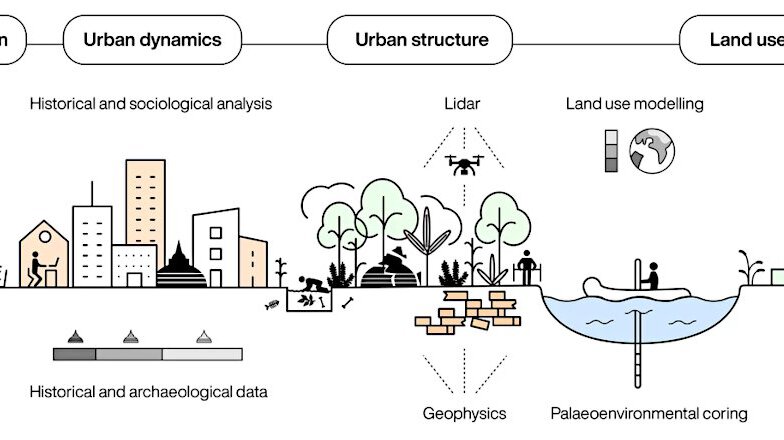Cities play a key role in climate change and biodiversity and are one of the most recognizable features of the Anthropocene. They accelerate innovation and shape social networks while maintaining and intensifying inequalities. Today, more than half of humanity lives in cities, a proportion that will rise to almost 70 percent by the middle of the 21st century. Nevertheless, despite their great importance for the Anthropocene, cities are not a new phenomenon.
In a new study, an interdisciplinary team from the MPI-GEA argues that the history of urban development is an important source for understanding the causes of our contemporary urban challenges and how we can address them. The publication highlights how new methods are transforming our understanding of cities of the past and provide a reference point for urban societies navigating intense climatic extremes of the 21st century.
These methods range from remote sensing techniques like LiDAR, which document cities in places where urban life was once thought impossible, to biomolecular approaches like isotope analysis, which can provide insights into how cities shape diverse organisms and shape human mobility and connectivity in the world influenced over time. At the same time, studying sediment cores and historical data can reveal how cities have exerted adaptive pressures on diverse landscapes and human societies—and continue to do so today.
As understanding of humanity’s impact on the Earth system grows, urbanization is increasingly seen as one of the most consequential forms of land use. This new study highlights the importance of multidisciplinary approaches, including Earth system modeling, in identifying the impacts of historical forms of urban planning on land use and, importantly, how they compare with the impacts of contemporary urban areas.
The researchers repeatedly emphasize that the past not only provides anecdotal insights, but also numerical data sets about street lengths, building types, population numbers, economic performance, ecological impacts and more. With advances in computational archeology, this opens up the possibility of quantifying similarities and differences in urban pathways across space and time, directly linking the past to the present.
Using diverse examples from around the world – from medieval Constantinople (now Istanbul) to ninth-century Baghdad, from Greater Zimbabwe to Greater Angkor in Cambodia – this study demonstrates the potential of new methodological approaches to uncover historical legacies and development of urban planning in the Anthropocene geological era.
